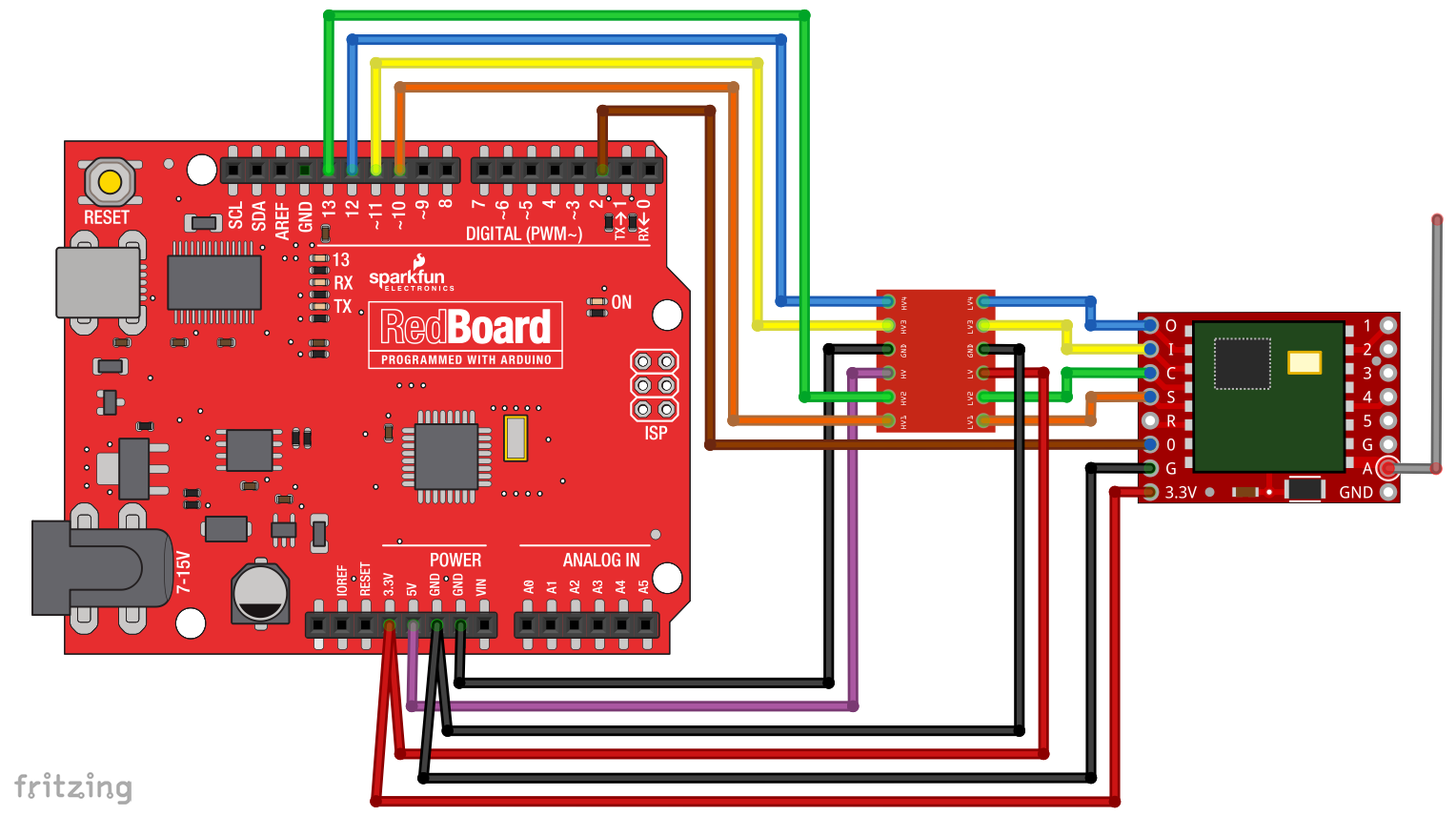Please help! Arduino UNO + RFM69HW (TSM:INIT:TSP FAIL)
-
I hope you didn't fry the rfm69, so in case you are still having problems with the level shifter connected try with another module
-
-
@mfalkvidd Thank you! I hope I can figure it out. To regret, my knowledge of English is not very great. As I understand it, the connection scheme will be the most similar to this:

I'm right? -
@mfalkvidd Thank you! I hope I can figure it out. To regret, my knowledge of English is not very great. As I understand it, the connection scheme will be the most similar to this:

I'm right? -
@vladimir yes, that looks great (except for the brown cable that doesn't go through the level shifter)
@mfalkvidd So I do not like the converter for 4 channels?
Here this is indicated by the link you gave me above

It will take 5? More precisely 8-channel version? -
@mfalkvidd So I do not like the converter for 4 channels?
Here this is indicated by the link you gave me above

It will take 5? More precisely 8-channel version? -
@vladimir you will need to shift all signals. You can use multiple 4x boards, or a bigger board.
Edit: maybe miso and dio0 don't need to be shifted, since the Arduino only reads from it. But I am not 100% sure.
@mfalkvidd Thank you! :raised_hands: I'll try tomorrow.
-
4ch is enough as the brown cable is the interrupt signal so it's just an input on the arduino
-
No you can't, because 3.3v are needed to power the level shifter and the radio module. Level shifter is not a voltage regulator.

